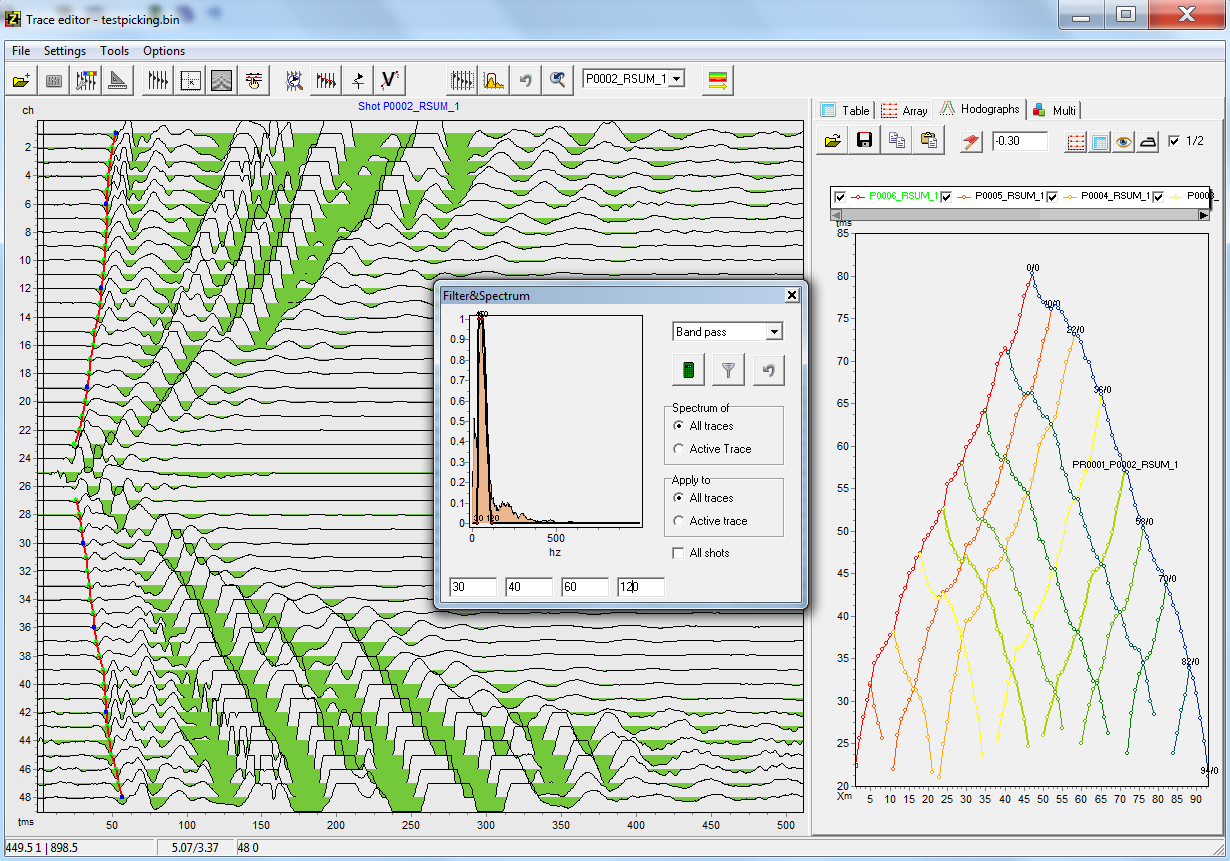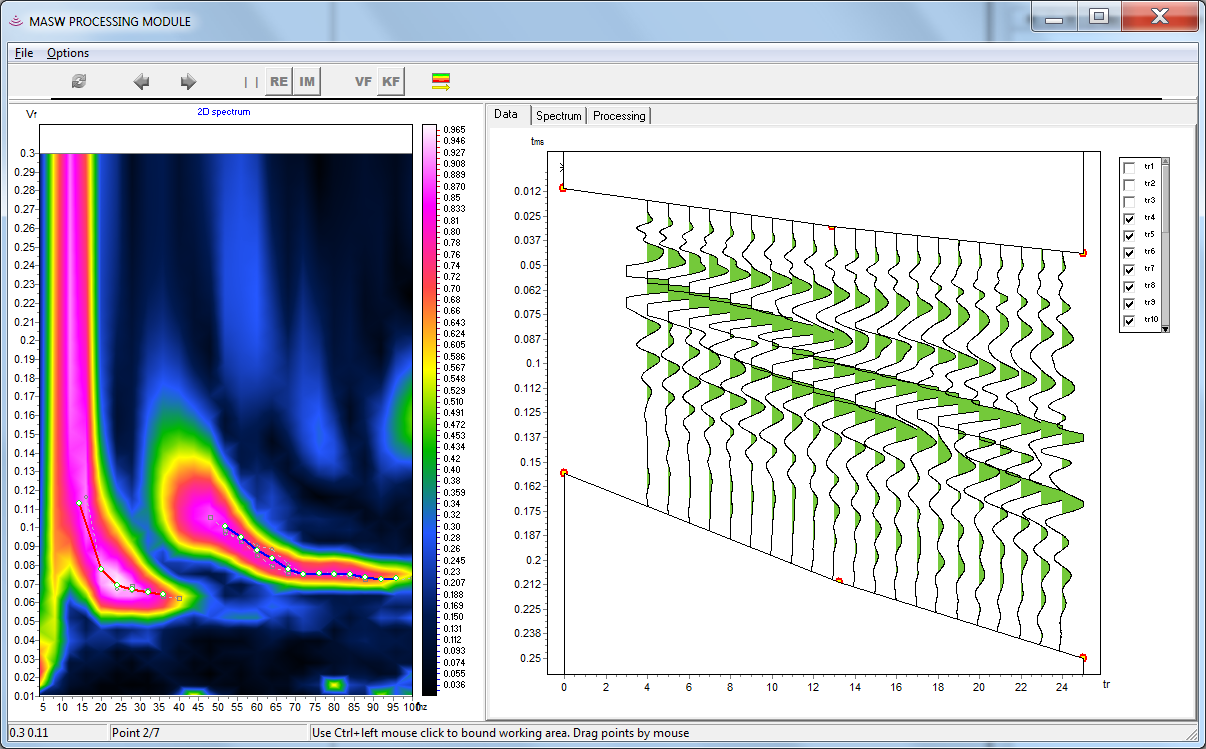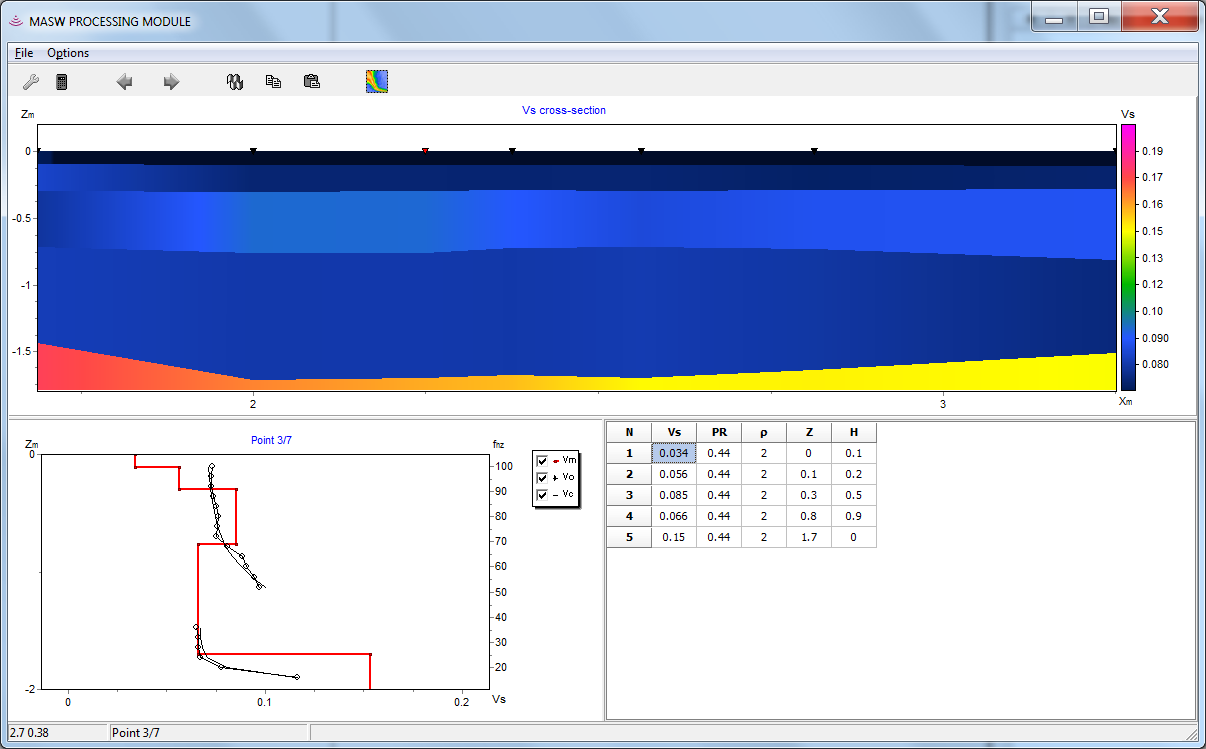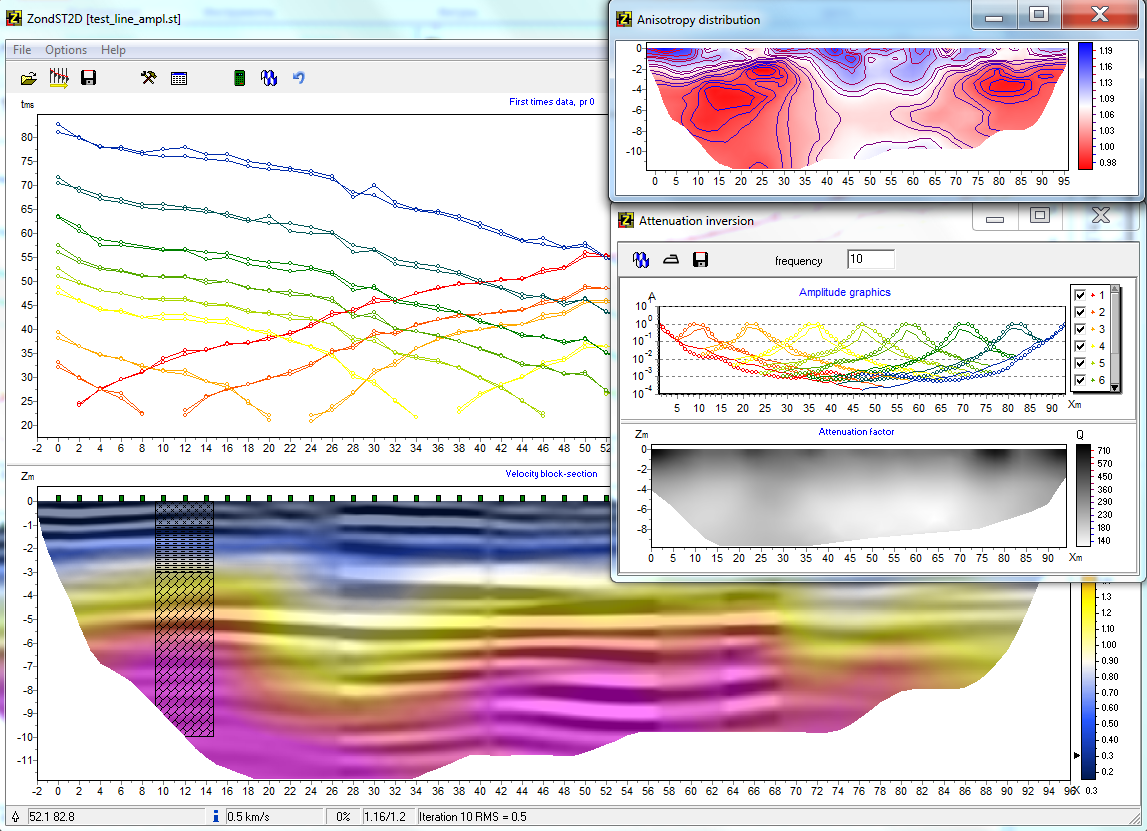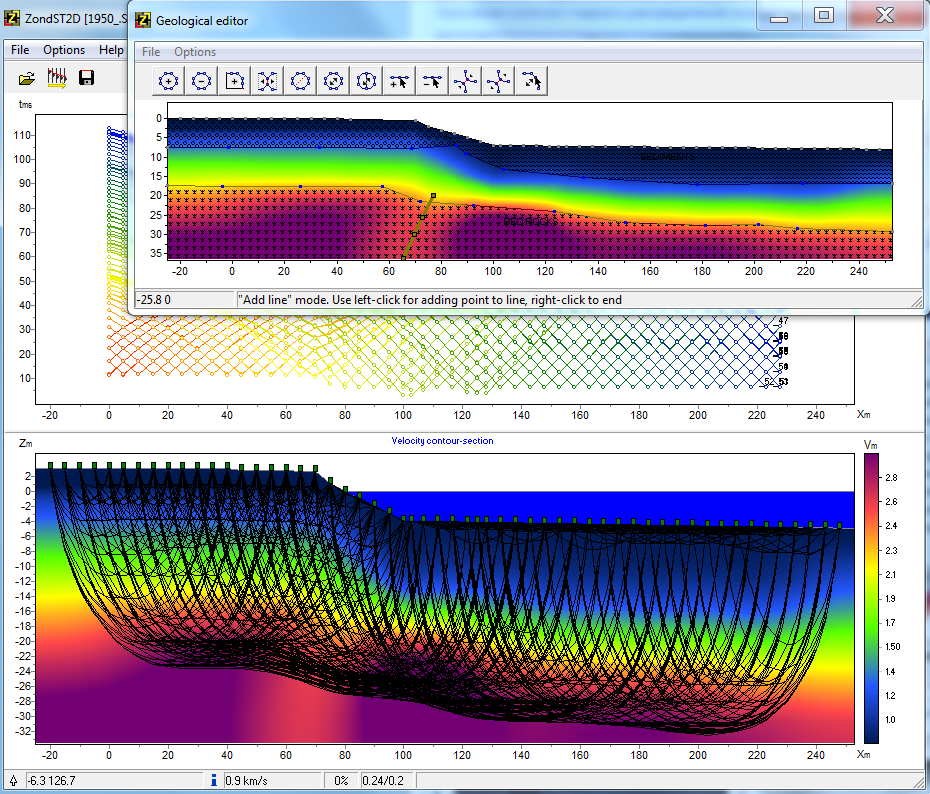ZondST2D
ZondST2d is designed for two-dimensional interpretation of seismic tomography data on refracted and reflected waves (land, cross-borehole and water variants).
The software includes the following modules: 1. MASW/ReMi – surface waves data processing and interpretation, 2. Refraction waves forward modeling and inversion in arbitrary layered medium , 3. attenuation tomography, 4. velocity anisotropy, 5. Reflection waves forward modeling and inversion in arbitrary layered medium. 6. HVSR (Nakamura method). 7. Down-hole(VSP) and fixed-hole. 8. Simple t0 refraction method.
In geophysics, the term seismic tomography is known for a long time. This is due to the fact that one of the main problems in seismology – the inverse kinematics. It consists in determining the velocity structure at a known time path of the refracted waves from source to receiver. The most popular in engineering geophysics was crosshole Seismotomography. This direction is used for detailed studies of rocks velocity structure in the interborehole space.
ZondST2d represents ready solution for seismic tomography, and solves wide range of problems from mathematical modeling and quality control to field data processing and interpretation. Convenient interface and variety of data visualization features allow to solve wide range of geological problems with maximum effectiveness. The software consists of two basic modules. One for the first times picking on the seismograms. The second is used for solving forward and inverse problems of seismic tomography. For the seismograms processing developed a special interface designed to simplify and automate the process of first arrivals times picking. Special attention is paid to variety ways of data visualization and simple access to frequently used functions. Solution of forward problem basis on special ray tracing algorithm of graph theory (Shortest path’s method). This algorithm is characterized by a high-speed calculations, and controlled accuracy. ZondST2d uses simple and clear data format which allows easily combining various systems of observation, including different variants of the topography setting up and other additional information. Important stage which prevents field measurement is mathematical modeling of velocity structure for seismic tomography survey. Modeling gives a chance to estimate the level of reflected waves first times and to make a choice of optimum parameters of the observation system for decision of formulated geological problem. ZondSt2d has great range of tools for mathematical modeling and analysis of refracted and reflected waves. As the general task of the program is inversion of velocity parameters, some variants of seismic tomography inverse problem solutions are designed in ZondST2d, basic of them are: smoothing inversion – to get smooth model and focusing – to get piece-smoothed model of velocities with depth. While program was designed special consideration given to a priori data accounting. Because of equivalence of inverse geophysical problems, quality of the obtained results strongly depends on the amount of a priori data used. In ZondST2d there is possibility of weights setting for measurements, fixing and limits making of changing features of different cells, using of a priori model as reference in inversion. The robust schemas of noise estimation are designed in the software. There is also possibility to import and display results of measurements by other methods and boreholes data that improved quality of results. Basic features:- Measurements at the water surface and the water bottom. Borehole and cross-borehole systems. Any mixed system.
- Four ways for specifying topography. Real-time editing.
- Buffer for 5 models.
- A set of tools for mathematical modeling of velocity section. Standard mesh “bitmap” style, arbitrary layered model and polygonal style model. Additional tools for gravity, magnetic forward modeling and for joint inversion(Vp&VS, MASW, reflection and refraction, TDEM, VES, gravity and magnetic).
- Number of the inversion algorithms : smooth, focusing, robust, block. Setting the reference model for the inversion. Suppression of the noise component during inversion (robust reweighting).
- Suppressing static shifts during inversion.
- Setting of limits for models parameters, inserting of a priori geological boundaries and borehole data to inversion. Assignment of weights for datum records. Editor of measurements.
- Estimation of results quality based on sensitivity matrix analysis. Calculation of sensitivity, quality and DOI index.
- Number of variants for data, model and apriori information visualization. Ability to set a semitransparent background for the resistivity section (geological, seismic sections).
- Three-dimensional visualization of the velocity sections along arbitrary system profiles. Maps slices of parameters for various depths.
- Geological sections editor and borehole columns editor. Titled boreholes.
- Exporting to bitmap and vector graphics formats, excel, surfer, AUTOCAD. Setting the scale of the exported image. Print images and create reports.
